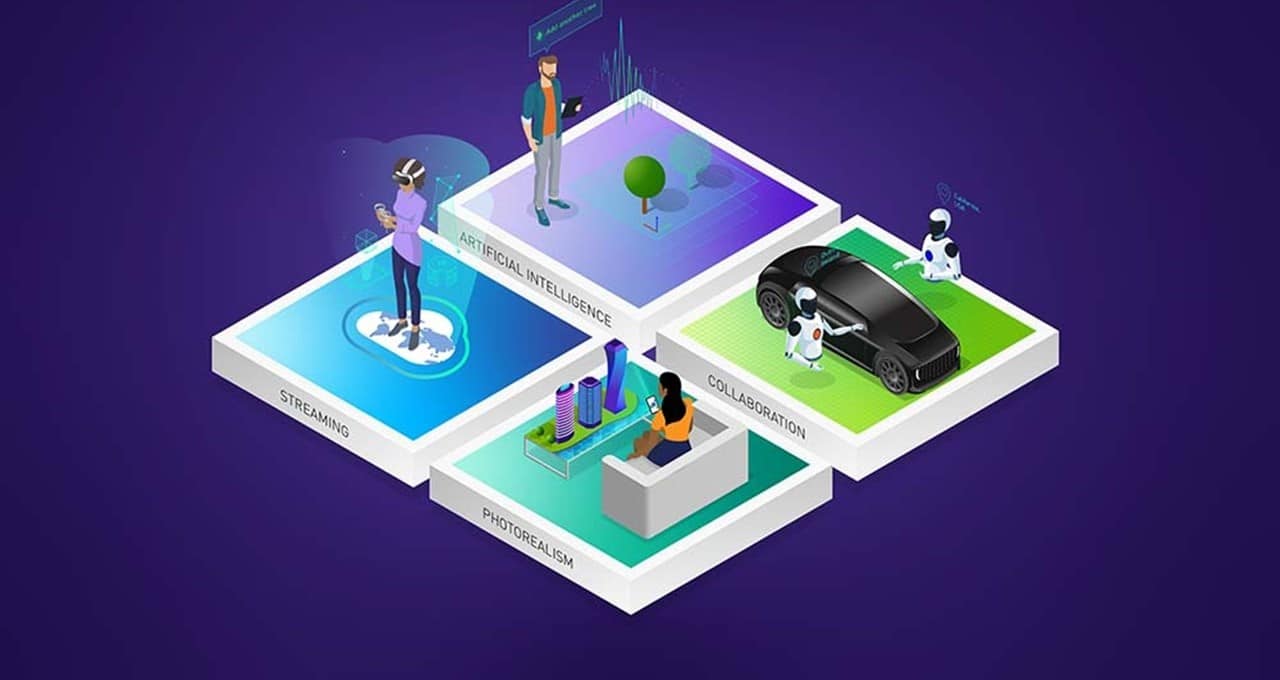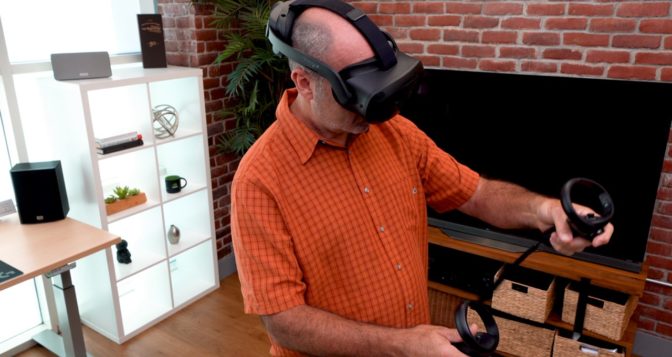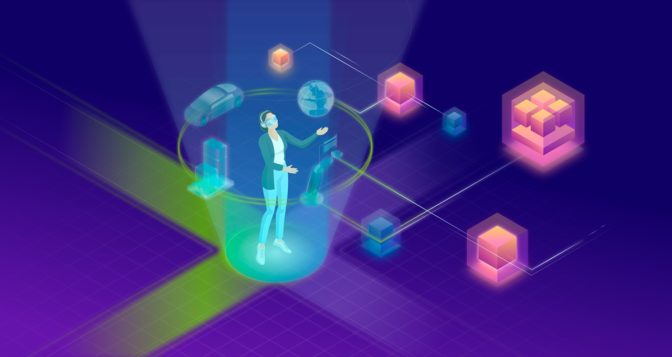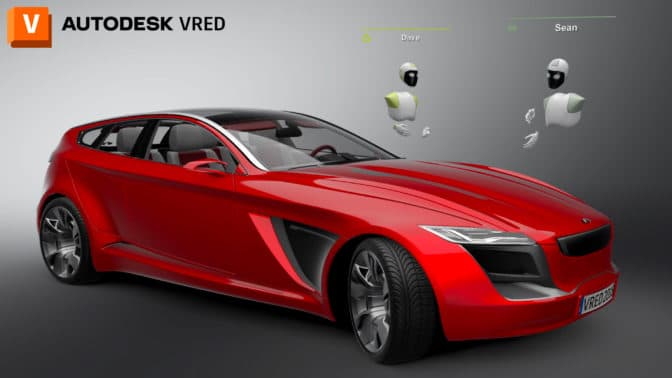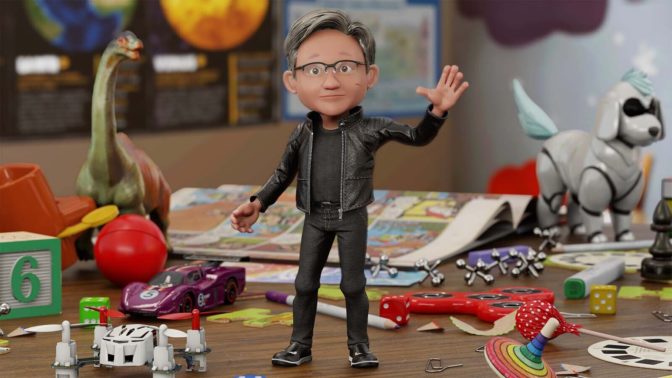Many organizations are using extended reality (XR) to deliver realistic immersive environments — whether enabling users to collaborate on designs for electric race cars, or helping audiences interact with nature through a digital world.
Next-generation immersive technologies are becoming more accessible, and the latest breakthroughs in graphics and AI are expanding the capabilities of XR. These four technologies are setting new standards in the XR ecosystem: cloud streaming, collaboration tools, photorealistic rendering and AI.
Streaming XR From the Cloud
All-in-one headsets are becoming increasingly popular because they enable an untethered virtual reality experience. But they typically can’t provide the power that’s needed for enterprise workflows, which often include complex simulations and detailed visualizations that contain millions of polygons.
Cloud streaming addresses this challenge by enabling professionals to run high-quality XR workflows from powerful computational resources at the edge, and stream these experiences to any location.
With cloud streaming, handheld devices or low-powered headsets can securely tap into heavy, complex workloads. This means users can develop software in the cloud or use all-in-one headsets to access large enterprise content — all remotely.
NVIDIA CloudXR and Lenovo ThinkReality VRX are two solutions making cloud streaming more attainable.
CloudXR provides professionals with enhanced flexibility and portability, as it allows teams to stream the most powerful VR and AR applications from the cloud or data center to virtually any device. This means professionals can explore graphics-intensive, immersive environments on a headset, tablet or smartphone.
The Lenovo ThinkReality VRX was built with enterprise use cases in mind, using CloudXR to deliver high-quality, immersive, GPU-powered XR experiences.
Using Advanced Collaboration Tools
Real-time collaboration is an important part of design and development workflows. As more teams work from different locations, XR gives users the opportunity to collaborate virtually with their coworkers, minimizing turnaround times and making review cycles faster.
Advanced tools like integrated bidirectional audio can bring real-time collaboration to teams, allowing users to communicate throughout their immersive experiences. Being able to conduct real-time design reviews together opens endless possibilities for collaboration across different XR workflows.
Project teams can also work together on the same virtual models through CloudXR and Autodesk VRED on Amazon Web Services. This lets anyone deploy CloudXR and Autodesk VRED to enter a photorealistic, immersive environment and seamlessly interact with large 3D models and scenes.
Creating Immersive Graphics With Photorealistic Rendering
Enterprise workflows often require ultra-high-fidelity graphics. This is why photorealism is critical for industries like architecture, manufacturing and automotive design — rendered graphics require immense accuracy and must be as close to reality as possible.
And with the growth of virtual worlds, digital twins and the metaverse, photorealism plays an important role in creating graphics to bring these simulated worlds to life. To experience the metaverse at full potential, users need to have the best graphics and the most powerful workstations.
NVIDIA RTX technology helps professionals develop and deliver the highest-fidelity visualizations for these immersive and virtual experiences. The latest NVIDIA RTX professional GPUs offer a combination of speed, performance and massive memory that allows teams to easily handle large, complex models in photorealistic environments.
Teams across the world can easily work together within real-time, photorealistic, 3D simulated worlds using NVIDIA Omniverse, a platform for building and connecting custom 3D pipelines. Within the platform, NVIDIA Omniverse Create XR is available for users to navigate and interact with their scenes through their immersive VR and AR devices.
Elevating XR Interactions With Powerful AI
With AI, the future of XR will be accelerated even further. The integration of AI and XR will help solutions scale past current limits and allow users to interact in immersive environments just as they would in the real world. Accurately representing immersive environments and making interactions as natural as possible will improve users’ comfort level and productivity.
NVIDIA’s Project Aurora is an example of a purpose-built platform where AI-driven virtual assistance will be integrated in XR environments. Project Aurora is a hardware and software platform that simplifies the deployment of enterprise XR solutions onto on-premises networks.
Another example of AI enhancing XR is NVIDIA’s Project Mellon, where conversational speech can dictate commands in an immersive experience.
Additionally, AI avatars will pave the way for creating engaging, interactive XR experiences. AI will enable 3D characters to see, hear, understand and communicate with people.
Creators and developers can bring these intelligent avatars to life with NVIDIA Omniverse Avatar Cloud Engine (ACE), a suite of cloud-native AI microservices that make it easier to build and deploy virtual assistants and digital humans. Omniverse ACE delivers all the AI building blocks necessary to create, customize and deploy interactive avatars.
With the power of AI integrated in XR, professionals and developers can create immersive experiences that are more realistic and intelligent than ever.
Learn more about NVIDIA XR technologies, and catch up on the latest GTC session to learn more about Project Aurora.
